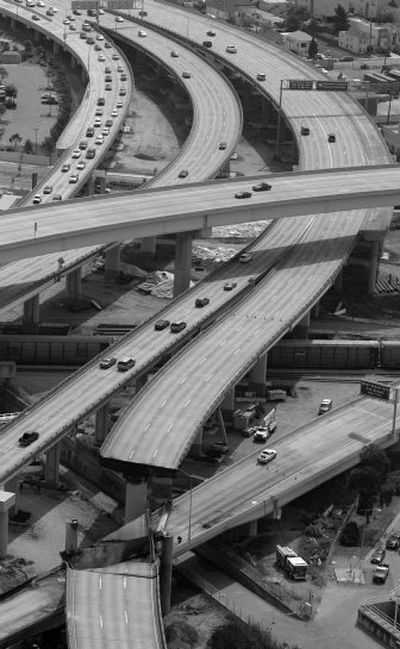Tanker fire topples part of freeway

OAKLAND, Calif. – A stretch of highway near the San Francisco-Oakland Bay Bridge collapsed Sunday after a gasoline tanker crashed and burst into flames, leaving one of the nation’s busiest spans in a state of near paralysis. Officials said traffic could be disrupted for months.
Flames shot 200 feet in the air and the heat was intense enough to melt part of the freeway and cause the collapse, but the truck’s driver walked away from the scene with second-degree burns. No other injuries were reported.
“I’ve never seen anything like it,” Officer Trent Cross of the California Highway Patrol said of the crumpled interchange.
Authorities said the damage could take months to repair, and that it would cause the worst disruption for commuters since the 1989 Loma Prieta earthquake damaged a section of the Bay Bridge itself.
Nearly 75,000 vehicles use the portion of the road every day. But because the accident occured where three highways converge, authorities said it could cause commuting problems for hundreds of thousands of people.
State transportation officials said 280,000 commuters take the bridge into San Francisco each day.
Transportation officials said they already had added trains to the Bay Area Rapid Transit light rail system that takes commuters across San Francisco Bay.
The tanker carrying 8,600 gallons of gasoline ignited around 3:45 a.m. after crashing into a pylon on the interchange, which connects westbound lanes of Interstate 80 to southbound I-880, on the edge of downtown Oakland about half a mile from the Bay Bridge’s toll plaza.
The driver may have been speeding, Cross said.
Witnesses reported flames rising up to 200 feet into the air. Heat exceeded 2,750 degrees and caused the steel beams supporting the interchange from eastbound I-80 to eastbound Interstate 580 above to buckle and bolts holding the structure together to melt, leading to the collapse, California Department of Transportation director Will Kempton said.